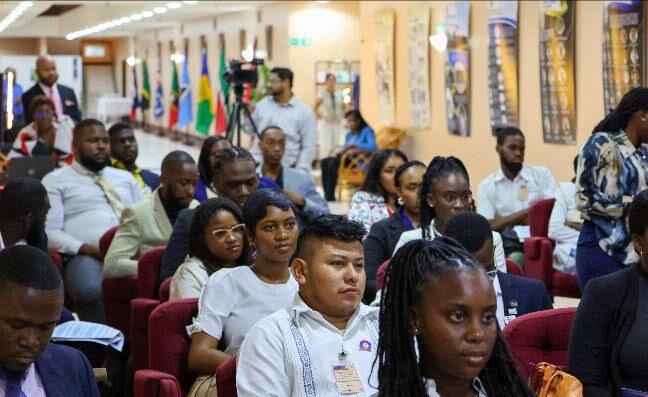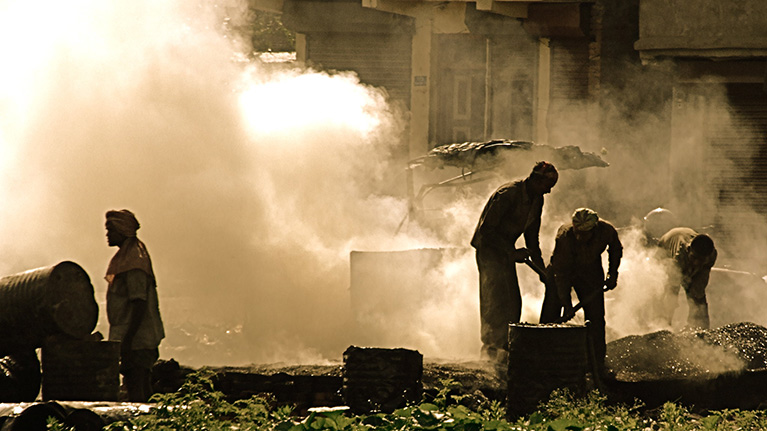By Lia Nicholson
ST. JOHN’S, Antigua, Oct. 13, 2014, CNS – About six months ago, New Zealand established a High Commission in the Caribbean, opening its doors in Barbados. Mrs. Jan Henderson, previously stationed in India, relocated to Barbados to head her nation’s new presence in the Caribbean Community (CARICOM).
From October 6th – 9th, Mrs. Henderson visited Antigua & Barbuda to present her credentials to Prime Minister Gaston Browne. On Wednesday, I accompanied the High Commissioner on a tour hosted by Ruth Spencer, National Focal Point for the Global Environment Facility (GEF) community grants programme. We visited three sites:
- Women in leadership: meeting Minister of Social Transformation and Human Resource Development, Mrs. Samantha Marshall
- Honey harvest: the Antigua & Barbuda Beekeepers Cooperative Society
- Water storage in Freetown village: community-led climate adaptation
When Jan Henderson and Samantha Marshall met in the Officer of the Prime Minister, the topic of women’s empowerment soon arose. Minister Marshall is the only female representative in the 12-member Cabinet. Indeed, in Antigua, women hold less than 15 percent of political positions, despite their high participation and performance. Supporting women in leadership positions, from captaining a sports team to managing a company, is a key development strategy.
On sustainable development, the High Commissioner indicated New Zealand’s priority of renewable energy, and in particular hydropower, wind, and geothermal. New Zealand’s 60+ years of experience in geothermal energy is a mentoring opportunity for Caribbean islands such as Montserrat and Dominica with high geothermal potential. Mrs. Henderson recalled how the energy generation process has evolved – excess geothermal energy was once released into the rivers, but now the left-over steam is directed to secondary uses, such as growing flowers and mushrooms. In response, Minister Marshall agreed with the need for renewable energy, adding that education is crucial because the public must support government initiatives in this field.
The second stop took us to the Antigua & Barbuda Beekeepers Cooperative Society where we met two community leaders: Jerome Henry, President of the Beekeepers Cooperative; and Bernard Wilson, President of the Antigua & Barbuda Association of Persons with Disabilities and Field Officer at the Community Development Division.
The Beekeepers Cooperative buys and markets honey for 40 beekeeping members, who own and manage hives. After almost 90 percent of the bee colonies were destroyed due to the varroa mite, Jerome said that they’re starting to see the numbers re-bound, although this year’s drought conditions were another challenge. Bee keeping is popular because of the high price honey fetches, but bees also provide a service to society, where beekeeping supports agriculture in a text-book example of a positive externality.
Bernard Wilson and Mrs. Henderson discussed the recent appoint of Dr. Walton Alfonso “Aubrey” Webson, who as of November 1 will be the new Permanent Representative to the United Nations for Antigua & Barbuda. Bernard hopes that the appointment of Dr. Alfonso, a visually-impaired individual, will achieve significant gains for persons living with disabilities in Antigua & Barbuda. As a first step, Parliament ratified the UN Convention on the Rights of Persons with Disabilities.
The Convention encourages measures for integrating the needs of persons with disabilities into national planning – for example, providing screen readers, wheelchair access, and special warnings in disaster-risk planning.
The third and final stop on the tour brought us to the eastern-most village of Freetown, a historic village in Antigua, and one of the first villages inhabited by freed slaves post-emancipation in 1843.
Rosita Edwards, the community leader for the project, met us at the site for a walking tour. In the 1600s, Rosita explained, the British government first built a reservoir for the villagers, maintained throughout the years. The reservoir – 8 feet deep with a holding capacity of about 10,000 gallons – was reinforced with concrete in the 1940s. Villagers would line up for buckets of water, and during drought years, water was so scarce that villagers resorted to the pond, straining tadpoles and other debris from the water.
As a response to growing fresh water scarcities, Freetown villagers have come together to implement a project that will restore the reservoir and water storage tanks adjacent to the church. The project, which will expand much-needed emergency water reserves, is supported by the Australian government.
Rosita is also working with Ruth Spencer to secure a Small Grant from the GEF to support the climate adaptation initiative.
CNS/db/2014



